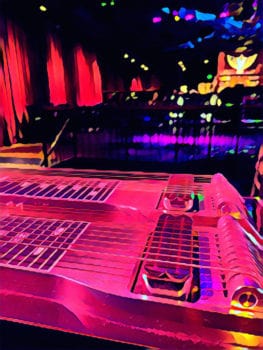As an Amazon Associate Playpedalsteel.com earns from qualifying purchases. This page contains affiliate links.
Compressors can sometimes feel as mysterious and challenging to use than the pedal steel guitar can feel to play. But fret not, using a compressor pedal for pedal steel is actually quite easy, and can be a great way to shape your dynamics.
You can use a compressor pedal to give you more control over your sound, and they’re also good for accentuating certain aspects of your playing. Whether you’re looking to create more sustain for your glissandos, or add more punch to the notes you pick, a compression pedal can be great to have on your pedal board.
Let’s take a deeper look at using a compressor pedal for pedal steel…
Why Use A Compressor Pedal for Pedal Steel?
You may think that using a compressor pedal for pedal steel is more of a novelty, and that it may be another effects pedal on your pedal board that you rarely use while actually playing. However, it can often be the most important tool for shaping your dynamics besides your playing techniques.
The reason you’d want to have more control over your dynamics (which is a fancier term for how loud or soft you play, or really anything related to your volume levels) is because your dynamics play a large part in how you sound. Musically, dynamics are just as important as the pitches of notes, the chords to a song, and other aspects of music that we sometimes take for granted.
If every song, band, or musician had the same exact volume level throughout a tune, then it would sound bland and lose a lot of its excitement. For instance, you could start your pedal steel solo at a lower volume, and then begin to play louder during parts that have more energy. This is a great way to build a solo to its climax, and create interest for listeners.

Also, sometimes the pedal steel has different roles within a song, or even various styles of music. For a slower ballad or waltz, often the pedal steel can play beautifully sustained notes that add texture (think that “classic” crying sound that pedal steel is sometimes known for).
When playing individual notes or riffs, the pedal steel can benefit from having a little more punch or attack to it. Buddy Emmons was great at making single notes sound impactful like this, like they were jumping out of the speakers towards the listeners.
Ultimately, many things with pedal steel come down to playing techniques and putting in the time for experience. But using a compressor pedal is a great way to accentuate these aspects of your playing, and become more aware of how they affect the music (and the more aware you become of these things, the more you’ll be able to improve them).
Dialing In Your Compression Settings
Choosing the right compression settings for your dynamics and sound can be a balancing act, and it can be tricky to hear with your ears what each setting is actually doing to the pedal steel’s sound. Most compressor pedals will have settings for attack, release, ratio, and level.
Sometimes a compressor pedal will have more options, but usually these are the most fundamental for dialing in your settings. Learning more about what each of these individual settings is doing to the sound is a great way to gain a deeper understanding of compression (and dynamics).
However, you can easily begin to implement some great compression techniques by just turning some knobs on your compressor pedal, and experimenting with some of the ways to use it. All of the tips below will show actual settings that you can use to easily and quickly begin using a compressor pedal for pedal steel.
Let’s look at some of the best ways to use a compressor pedal for pedal steel, and how you can begin applying them today…
5 Ways To Use A Compressor Pedal for Pedal Steel
1. Create More Sustain
One of coolest things about pedal steel is how great it is at sustaining notes. Between using the bar, volume pedal, and hot pickups, you can really use the pedal steel to sustain notes for a longer duration compared to many other instruments.
When you’re making the notes really “cry” on the pedal steel, and moving between chords and harmonized intervals, the sustain and vibrato that you’re creating is really expressive and characteristic of the pedal steel’s sound. The pedal steel can really sound smooth and creamy for a lot of tunes.
You can use a compressor pedal to bring this aspect of your playing out even more. Better yet, it can often add more thickness to your sound, and make it sound more bold in a song.
Try these settings to create this effect:
- Fast Attack (usually this is having it at a lower setting, or turning the knob counter-clockwise)
- Higher Ratio
- Moderate to Slow Release (slower means having the knob at a higher setting, or turning it more clockwise)
- Lower Threshold (if there is a setting for this)
2. Give Your Notes More Punch
Often when playing pedal steel, there are times you’ll want to play notes more melodically for solos, riffs, and licks (think “Steel Guitar Rag”, “Bud’s Bounce”, or one of Buddy Emmons’ bluesy sounding solos).
You’ll usually want to play these notes with a louder attack, and not use the volume pedal to cover up their sound. Like a guitar player does when they play a lead solo with a pick, you’ll want the notes to cut through the mix and project forward in the music: you want them to have more “punch”.
This compression technique is great for accentuating this on pedal steel, and can be a great thing to try with your picking and right hand blocking techniques. When playing this way on pedal steel, try to pick like you mean it, which may mean picking with more force or confidence even if you’re still developing your technique.
It can be nice to develop a picking technique that allows you to play notes with either strength or delicacy, so you can really adapt your style to any playing situation.
Here are some settings that can really make your notes have more “bite” to them…
- Moderate Release to Slow Release – be sure to use a slow enough release where the compressor doesn’t falter the sound in the middle of the note’s duration, but a fast enough release that it deactivates before the next played notes if possible.
- Slow Attack
- Experiment with Ratio (try medium or medium-low as a start, and use ears to calibrate)
3. Polish Up Your Dynamics: Staying True to your Tone
This is one of my favorite compression techniques, and I use it all the time when recording and mixing pedal steel. It is also great to use with a compressor pedal at home while practicing, or when performing on stage.
When playing pedal steel, or any instrument, it’s nice to have options for playing dynamically. At quieter spots in songs, it’s great to be able to play softly and make this part of the song have a lot of subtlety to it.
On the other hand, you want to really be able to play lively and with more excitement if the occasion calls for it. No matter what style of music you play, being able to thrill listeners with louder dynamics during certain songs (or parts of them) is a great way to keep their interest and coming back for more.
But how do you find this delicate balance, and use your dynamics to enliven the different parts of a song? Often this is a matter of listening closely to the music (using your ears), reacting to the musicians around you, and utilizing your picking technique to voice your dynamics on the instrument.
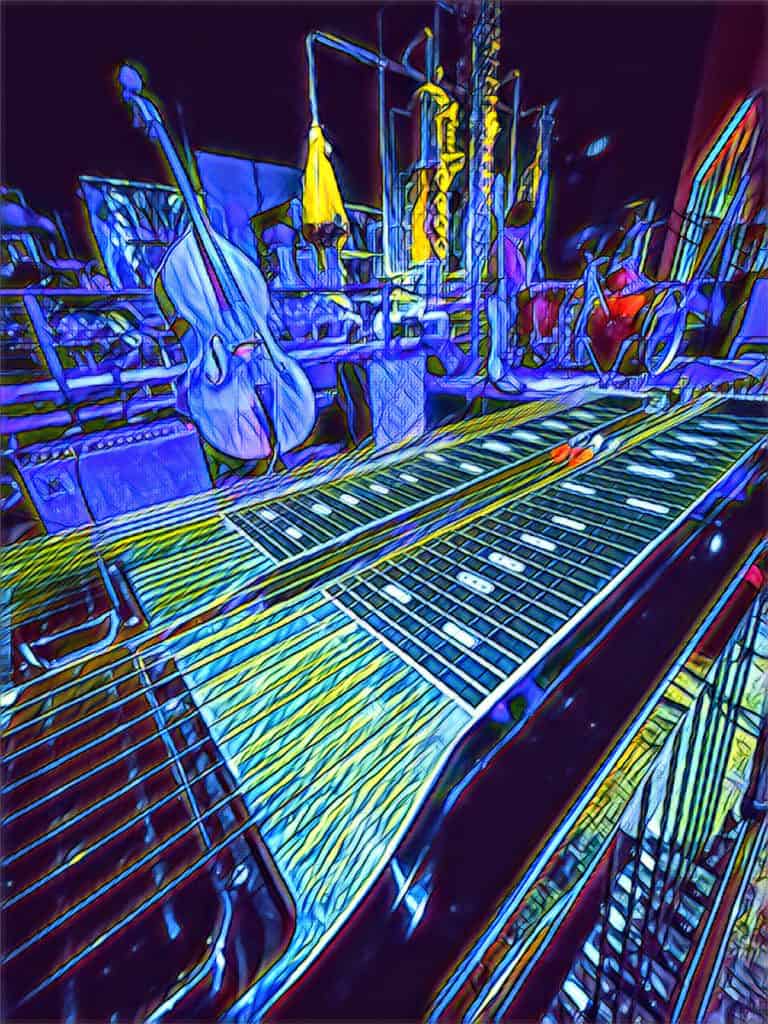
However, you can use a compressor pedal to polish up your dynamic range and give you more freedom as you play without compromising your tone. Also, this compression technique can give your overall sound more presence and transparency by bringing it forward in the music or mixture of instruments.
With these settings you’ll be able to play softly (and the compressor won’t mess with the subtle nuances of your playing), yet when you play louder notes the compressor can smooth them out for you if they’re too loud or abrasive.
Even better, with this control over your sound, you’ll be able to increase the volume of your pedal steel in the music in a way that brings more presence to your tone. The compressor can help you do this, while being sure not to step on the toes of other instruments by always playing too loudly.
Here are the settings:
- Low Ratio
- Slow Release
- Low Threshold
- Moderate to Fast Attack
4. Making an Appearance for Special Occasions
Like many things, usually less is more when it comes to compression. This doesn’t mean ditching compression completely, but rather using it tastefully.
What if your playing in a song feels perfect dynamically, but there were just a couple of notes in the song that felt a little too loud? You can use a compressor pedal to catch some of these drastic notes, while not having as much effect on the other dynamic aspects of your playing.
These settings are a little harder to dial in, without creating a “wobbling” effect where the compressor engages and disengages at the wrong times. If this happens, you’ll hear the compressor “squashing” the sound and creating an irregular pulse that sounds dissonant.
However, if you experiment with the settings and get them just right, this method can smooth out just the notes you need it to. You’ll only hear the compressor kicking in when you want it to, and you’ll still preserve your dynamic nuances.
Here are the settings…
- Lower to Medium Ratio
- Medium Attack
- Medium Threshold
- Experiment with Release
5. More Control: Chord Vamps and Rapid Playing
This technique is similar to the one above, but it is more useful for quicker playing styles that have a lot of dynamics to them. In situations like these, you’ll want to allow the more lively playing style to shine through, yet have some control over the sound.
A good way to understand this is to think of a slap bass player. This playing style has a lot of “pop” to it, and is energetic, yet it quickly fluctuates between really loud notes and the soft spaces in between.
Sometimes when you play chord vamps on pedal steel, having this kind of percussive feel can really add a lot to the rhythmic aspects of the tune. But how can you add this, without being too overbearing, and still allow the other musicians plenty of dynamic room when they’re playing a solo or melody?
You can set your compressor pedal to catch just the very high peaks of your playing (and bring them down in volume), and do so quickly so that your next note isn’t overly affected by the compression. Back to the slap bass player: the compressor will only catch the notes that overly jump out and can sound too surprising to a listener’s ears, but still allow the technique to have its glory.
Check out these settings…
- Fast Attack
- High Threshold
- Fast Release
Best Compressor Pedals to Use for Pedal Steel
Effects pedals have come a long way in the last several years, and there are some really great compressor pedal options for pedal steel. Most compressor pedals are intuitive to use, and you’ll be able to experiment with many of the settings mentioned above.
When buying any pedal, always keep in mind its functionality, price, how it affects your tone, and its overall value to your pedal board. If it is helpful for shaping your tone, and is a sonic tool that has a lot of different uses musically, then it is probably worth checking out.
Here are some of the best compressor pedals to use for pedal steel, depending on what you’re looking for…
Good Value with Less Parameters: Keeley Compressor Plus (link to Amazon)
This pedal is popular among guitar players, and can be good to use with pedal steel too. If you’re looking to just get started with a compressor pedal, then this can be a good option. However, keep in mind that the pedal steel is dynamically complex, and you may want to have more setting options to be able to dial in various compression techniques.
Although you won’t have as much control over the parameters as you’d expect from a compressor, you’ll still be able to get a good sounding compressor pedal that is intuitive to use. Click here to see it on Amazon…
Best Sound and Highest Quality: Cali76 Compact Deluxe (link to Amazon)
Oftentimes, the best compressors (for the recording studio or effects pedals) have a way of enhancing your tone with warmth and clarity, while having a natural sounding way of balancing your dynamics. This is a great compressor pedal to use if you’re looking to preserve your tone, and have all the functionality you’d expect from a compressor. Based off of Universal Audio’s renowned 1176 compressor, this pedal uses a preamp that is studio quality and can sound great with pedal steel. Click here to view it on Amazon…
Most Parameter Options and Good Tone: EarthQuaker Devices’ Warden V2 (link to Amazon)
This is an optical compressor pedal that has a nice array of settings, which makes it handy for trying out various compression styles. Being an optical compressor, it’ll still provide warmth and balance to your tone while giving you plenty of control over the compression. For pedal steel, this can be a nice middle-of-the-road option. You can experiment with the tone and sustain settings to help dial it in for your pedal steel rig and playing style. Click here to view it on Amazon…
Conclusion
Using a compressor pedal for pedal steel is not only a good way to learn more about the dynamics of your playing, they can be great for adding more flexibility and options for shaping your dynamics. A compressor pedal is one of the best dynamic tools to have for your pedal steel rig, along with your volume pedal and right hand.
Thanks for checking out this page, hope it is helpful and makes playing more enjoyable! If you’re interested in diving deeper into playing E9 pedal steel, check out these resources and guides…
The Chord Guide for E9 Pedal Steel (E-Book, Digital Download)
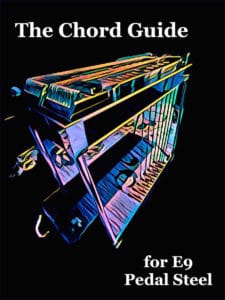
Learn the chords on the E9 neck in a way that makes playing simple and enjoyable…
- Almost Every Chord You’ll Ever Need for E9
- Intuitive and Easy to Use
- Make Use of Pedal and Lever Combinations
- Example Tabs of Chord Movements
- Easily Utilize the Nashville Number System
- Great For Any Key and Style of Music
Includes a bonus section of over a hundred pages of extra chord charts, key references, and more!
Playing Pedal Steel:
The Essentials
An easy and intuitive approach to mastering the pedal steel…
- An in-depth look at bar control, the right hand, using pedals, & the volume pedal
- Multi Angle Views – that you can always reference.
- Ways to Practice, How to Practice, What to Practice.
An online pedal steel lesson series – includes a free pedal steel EBook!
More Digital Downloads for Pedal Steel…
The Scale Book for E9 Pedal Steel
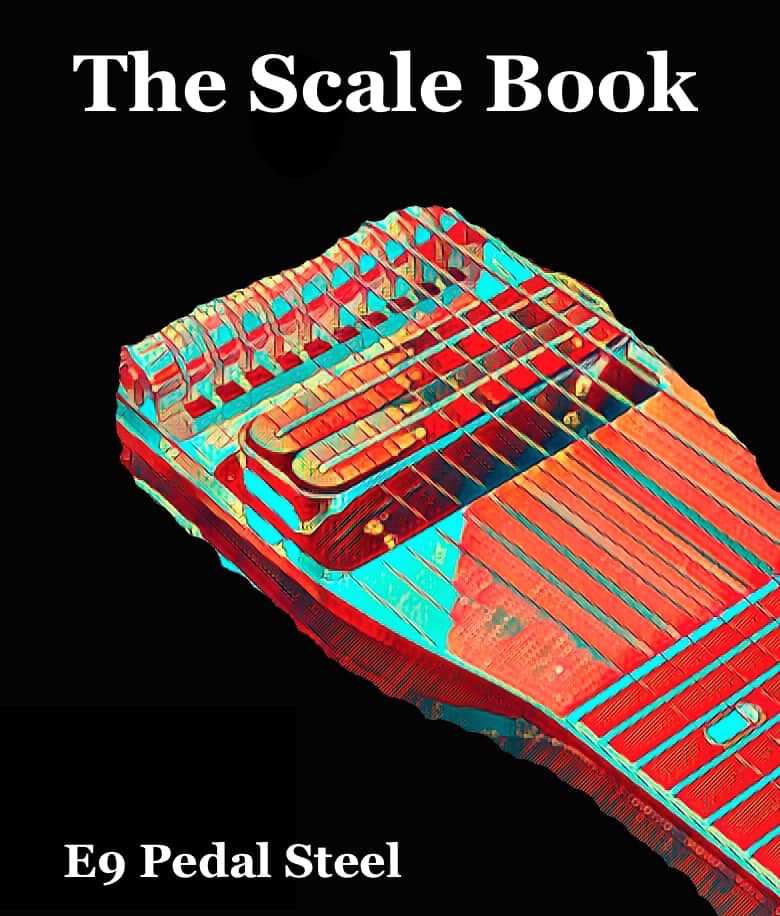
Over 1,000 Pages with Tabs and Diagrams!
- Easy to Use Reference for Practicing
- All Major and Minor Pentatonic Scales, Modes, Major Scales
- All Keys, and Covers the Fretboard
- Includes Pockets of Scales
The Art of Right Hand Technique
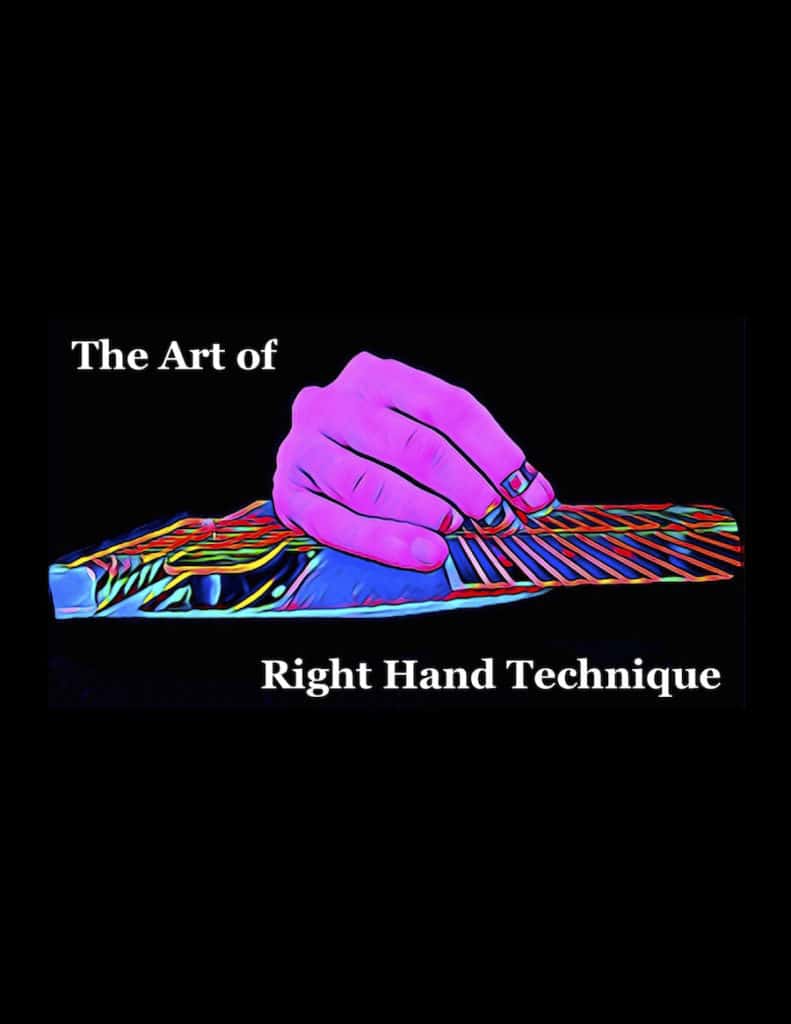
A detailed look at one of the most challenging and mysterious aspects of steel guitar playing: the right hand…
- An In-Depth Guide to Picking and Blocking
- How to Efficiently and Accurately Play Notes on Steel Guitar with Info, Advice, and Tips…
- Great for Pedal Steel, Lap Steel, and Console Steel Guitar
- Over 100 Pages with Graphics, Illustrations, & Practice Exercises
200 Country Riffs & Licks for E9 Pedal Steel
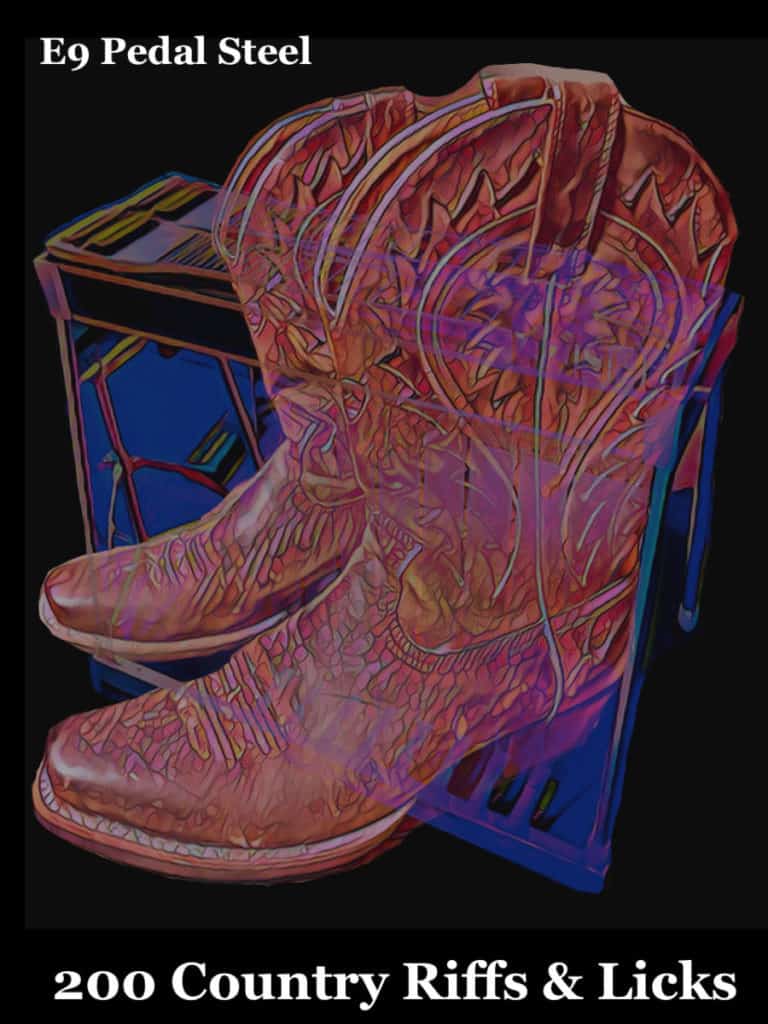
Add these country licks to your playing repertoire…
- Easy to Read Format
- Includes Rhythmic Notation
- Playing Over Chord Changes
- Great for Country, Alt-Country, & Honky-Tonk Styles
For info on using delay and reverb with pedal steel, click below…
